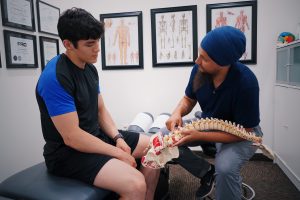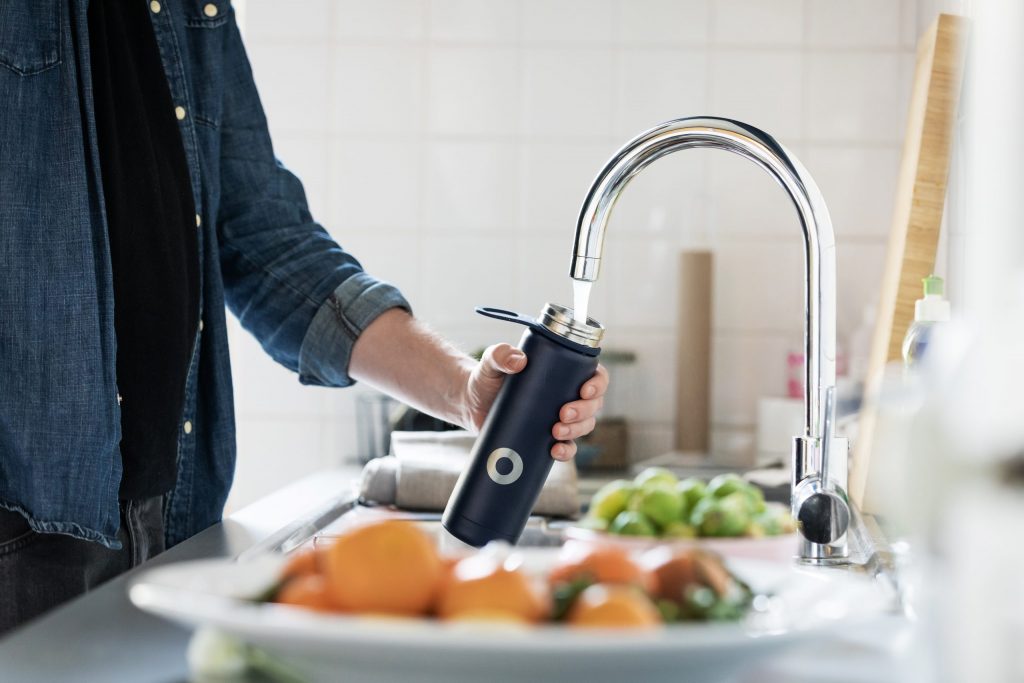Diving into the ocean of hydration, its related health effects, then trying to summarise it all in a couple of pages is like diving into the ocean to find that lost wedding ring from 6 years ago. There’s going to be a lot of issues that we’re going to have to swim right by. However, if you’re particularly interested, there’s some great research articles below that should help quench your scientific thirst and help you find any information that we haven’t plucked out of the sand.
To start with, although water is an essential ingredient for human survival, our incredibly resilient bodies can last up to 3 days without water. But, is there a difference between surviving and thriving? That is what we are hoping to explore today. Does a hydrated body effect our ability to thrive in this modern world? How does hydration status effect things like coordination, mood, muscle, ligament and disc healing? Let’s dive in & see.
WHO’S LIKELY AT RISK OF DEHYDRATION?
There’s more people at risk of dehydration than first thought. Doing the “Tarantino” we are all at risk. Now lets rewind, play it back to the most common groups and try to peel back this hydration issue a bit more.
ATHLETES
The most obvious group at risk of dehydration. Particularly endurance athletes. If you look at the multi billion dollar industry that is athlete hydration and fuelling, you can catch a glimpse at just how important this problem is (and how many people are trying to cash in on it)…. In that same breath, it can be quite easy for athletes to lose between 6-10% of body weight through sweat. That is an incredible amount given that the signs and symptoms of dehydration are commonly seen & can have negative effects with as little as a 1-2% loss of body weight.
INSIDE/OUTSIDE WORKERS


People prone to long days and hot conditions are the next most likely group to become dehydrated. Here, you might consider your outdoor workers like roofers, painters & miners. Or think about mechanics, boilermakers in hot, enclosed sheds or warehouses. According to research, it is quite possible for these workers to be loosing up to 2.0L/hr of water and up to 6L/day. It is interesting to note that although workers directly exposed to the sun are at risk of dehydration they at least “feel” the heat so they are likely to be consciously aware and drink more. Whereas, indoor workers in hot environments might not have had the impact of the sun so their thirst mechanism is less likely to be stimulated.
ELDERLY
The older population are quite prone to dehydration due to two factors not seen above. Firstly the elderly have a lower tendency to actually feel thirsty. Second, they naturally have lower water reserves. Similar to our protein requirements increasing as we age, hydration is another thing that with ageing, we need to be even more conscious of. Perhaps, the elderly may even need to drink regularly, when not thirsty and even increase their salt intake when they sweat. This may help reduce the risk of low blood pressure related injuries, falls, strokes, black outs and abnormal fatigue.
CHILDREN


Kids and the elderly have differing responses to ambient temperature and different abilities to regulate their own body temperatures compared to healthy adults. Children in warm climates are susceptible to heat illness as they have a greater surface area to body mass ratio, a lower sweat rate, and slower rate of acclimatising to heat. Children also have an inverse relationship to heat when under hydrated where their core temperature may increase increase, making it even less likely for them to sweat.
The final two groups might be somewhat unsuspected when it comes to dehydration.
SMOKERS
Clinically, it’s been very apparent over the years that smokers do not heal nearly as quickly compared to non smokers when it comes to musculoskeletal based conditions. Research proves this too. Nicotine and other various chemicals in cigarettes affects your ability to thermoregulate and control your own hydration. As such it is easier for skin, muscles and tendons to be under hydrated just in day to day life.
OVERWEIGHT INDIVIDUALS
This is somewhat of a paradox when it comes to dehydration. Fat tissue actually contains only about 20% water, whereas lean tissue contains up to 70%. So the higher the percentage of body fat, the lower the percentage of body water. Then there’s the change in surface area, body weight and metabolic rate that can leave the overweight person sweating more than a healthy weight individual. Although this is a generalisation, diet has a huge impact on hydration too. It’s estimated that our average diet is responsible for 22% of our hydration status. Depending on the food source, in the cases of fruits & soups they can be up to 80% water, yet processed foods and confectionary can be as low as 10%.
Although there are multiple groups mentioned above, if we are human, even mild levels of dehydration can effect. Symptoms can range from decreased performance, reduced endurance, increased fatigue, decreased concentration, reduced motion, reduced reaction time, decreased alertness, short term memory dysfunction, delirium or confusion like symptoms, increased perceived effort and altered thermoregulatory capability. It makes sense, potentially, depending on our sport of choice, work, or age group that perhaps drinking to thirst just isn’t enough. Maybe hydration strategies need to be more specific and even involve the use of strategies adapted from the sports and military industries. Use of electrolytes and or hydrating schedules may be beneficial for those particularly at risk.
WHAT ARE THE EFFECTS OF DEHYDRATION?
Hydration status effects a myriad of your physiological functions. From blood pressure, kidney function, digestion, brain activity, mood, sweat responses and salivary mechanisms just to name a few. For us, we are Chiropractors. So might try something novel and stay in our lane. Let’s focus on the spine. Why does hydration matter to the physical tissues of the spine from the vertebrae right through to the surrounding and muscles, ligaments, tendons and discs.
BONES
Water makes up over 30% of our bone density. That bone density is then a combination of minerals, salts water and more. So if you want strong bones, possibly ones that can resist the wear and tear of life, potentially stave off arthritis. Then hydration is essential for bone health.
MUSCLES, LIGAMENTS & DISCS


They are all soft tissues, they are all connective tissues too. It’s their action that allows us to move. However, their ability to push, pull or hold is significantly effected by hydration. Skeletal muscle is over 70% water and as we’ve already touched on, this has a higher water content than fat. This high water content in muscle is part of the reason it can heal so quickly (8-12 weeks). Whereas, ligaments and tendons have a lower volume of water and may take up to 12-24 months to heal depending on the injury and various other complicating issues. It might be worth noting, that muscles work based on a chemical signal. This chemical signal tells the muscles to work and this signal is actually an electrochemical signal. Therefore, muscles need more than just water, they need electrolytes and salts too. Keeping the muscles hydrated while maintaining the right chemical balance assists the muscles to contract, fire & work throughout the day.
SPINAL CORD
This information superhighway continues to transport information throughout the body all day, every day. The messages the spinal cord sends go bi-directionally from our bodies to our brains and vice versa.


The signals or messages that are transmitted along these nerves and through the spinal cord aren’t exactly hard wired. It’s not a plug in & play situation. Instead, more similar to a Bluetooth connection the information is transmitted via an electrochemical signal. Just like muscles need to be hydrated and need a chemical signal so they can contract & fire, the messages in the spinal cord need to be chemically sent and received in order to do their work too.
This is one of the big reasons why you might see someone at the end of a marathon or ironman triathlon, stumbling and moving awkwardly. Or it’s just impossible to make that last rep at the gym. As fatigue progresses, dehydration is more likely, and the body’s electrochemical stores required for contraction are depleted. Both muscles and the spinal cord are unable to communicate properly and coordinated body movement goes off the rails. Again, this is another hat tip towards the need for good salts or electrolytes to maximise hydration. Depending on diet and lifestyle requirements, water alone may not be enough.
Finally, if those reasons aren’t enough to sustain your own hydration, consider your spinal cord. Your spinal cord literally lives in a sea of fluid. Known as the CSF (Cerebrospinal Fluid), this fluid bathes and encapsulates the skull, spinal cord and pelvis. It acts as a cushion for the nervous system. In states of dehydration, it’ll tense & tighten, limiting spinal movement and placing a handbrake on our ability to move.
OUT TO SEA
So there you have it, who’s at risk of dehydration and also, from a spinal health end how can it effect us. Water as our most essential nutrient is nothing new. Yes, the average diet will provide over 20% of your water intake, but why is it important that you aim to top up those reserves? Hopefully this’ll shed a little light on why hydration is so important, especially when it comes to your health and healing.
References
- Popkin, B., D’Anci, K., Rosenberg, I. Water, hydration and health. 2010 August 1. Nutrition Reviews, Volume 68, Issue 8.
- Benelam, B., Wyness, L. Hydration and health: a review. 2010 February 22. Wiley Online Library.
- Ritz, P., Berrutt, G. Importance of Good Hydration for Day-to-day Health. 2005 June 1. Nutrition Reviews, Volume 63 Issue 1.
- Horswill, C., Janas, Lynn. Hydration and Health. 2011 July 25. Sage Journals, Volume 5, Issue 4.
- Perrier, E. Shifting Focus: From Hydration for Performance to Hydration for Health. 2017 June 15. Karger Publishers.

